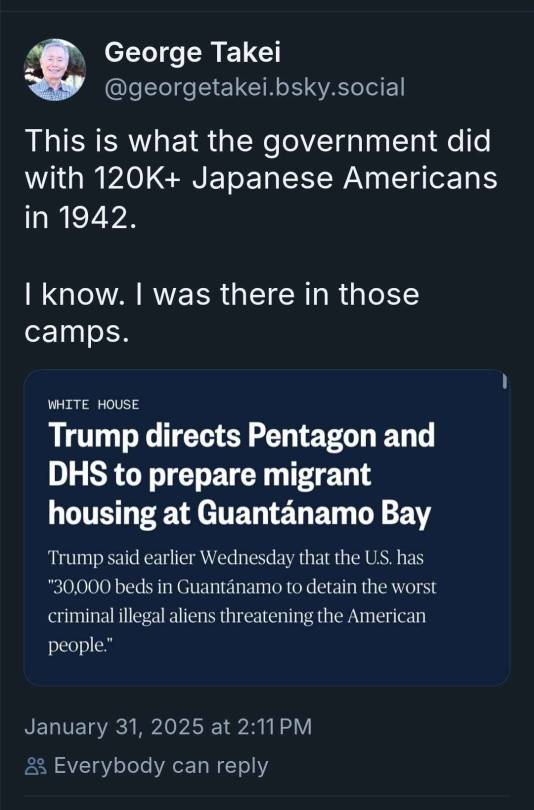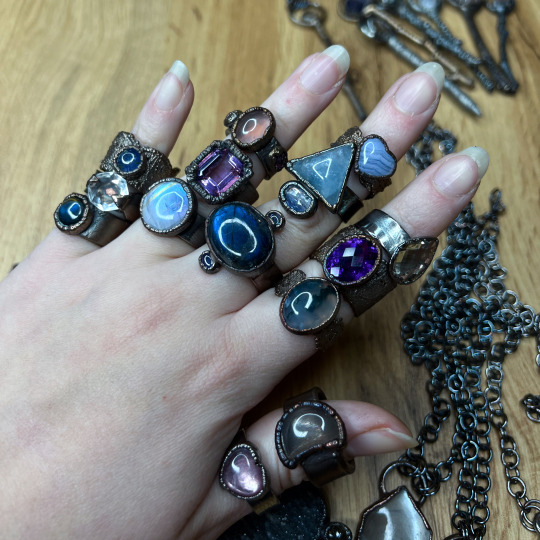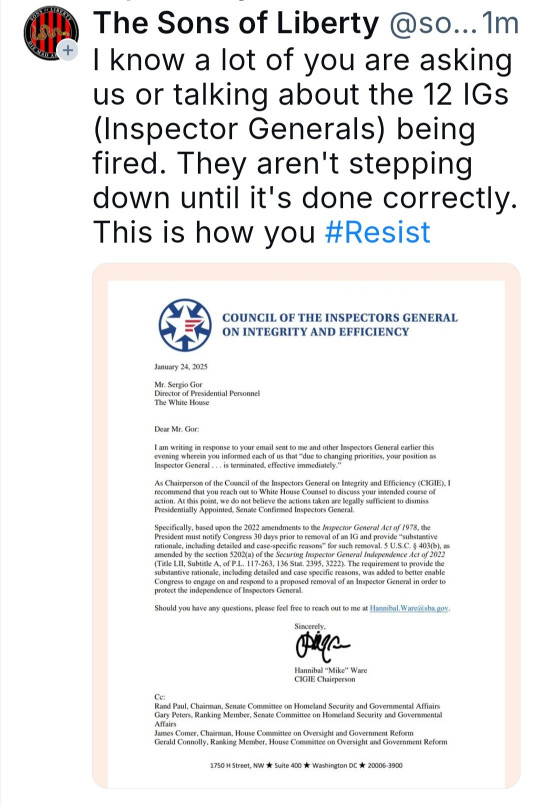Hi, I'm Mimi (Aka DK, kat, dragonkat, dragonkitty...) Previous url: Dragonkittyintheanomaly she/they 30, Jewish, Nonbinary, Artist. Quoiro/Panro Greyace. Autistic. ADHD. practically a dragon. fanart blog Dksartz
Don't wanna be here? Send us removal request.
Text
🇺🇸recall of various types of canned tuna due to fucking botulism <- CAN KILL YOU 🇺🇸
this involves some pretty big name tunas. if you eat canned tuna in the united states, you are going to want to check this list. botulism is one of the biggest deals in food poisoning. THESE CANS CAN FUCKING KILL YOU
EL SEGUNDO, CA, February 7, 2025 – Tri-Union Seafoods has made the decision to voluntarily recall select lots of canned tuna products sold under the Genova®, Van Camp’s®, H-E-B and Trader Joe’s brand names. This voluntary recall is out of an abundance of caution following the notification from our supplier that the “easy open” pull tab can lid on limited products encountered a manufacturing defect that may compromise the integrity of the product seal (especially over time), causing it to leak, or worse, be contaminated with clostridium botulinum, a potentially fatal form of food poisoning. Consumers are warned not to use the product even if it does not look or smell spoiled. Consumers feeling unwell should seek immediate medical attention. No illnesses associated with the recalled products have been reported and the recall is being conducted to ensure consumer safety. The impacted products were distributed to retail stores as follows: H-E-B label - Texas Trader Joe’s label – Delaware, Illinois, Indiana, Iowa, Kansas, Kentucky, Maryland, Michigan, Minnesota, Missouri, Nebraska, New Jersey, New York, North Carolina, Ohio, Pennsylvania, Virginia, Washington D.C., and Wisconsin Genova 7 oz. - Costco in Florida and Georgia Genova 5 oz. - Harris Teeter, Publix, H-E-B, Kroger, Safeway, Walmart, and independent retailers in Alabama, Arkansas, Arizona, California, Florida, Georgia, North Carolina, New Jersey, Tennessee, and Texas Van Camp’s label – Walmart and independent retailers in Pennsylvania, Florida and New Jersey
some emphasis mine. this is not a comprehensive list of retailers. these cans were sold in more stores than what is listed, and there is no complete list of affected stores. long story short the pull tab has a defect that makes these cans the perfect environment to give you botulism. and botulism is REALLY REALLY FUCKING bad. it is one of the deadliest forms of food poisoning and commonly grows in dented or damaged cans. unfortunately, the recall announcement does not currently include images.
tumblr does not let me make tables, so I cannot easily format all the necessary information in a way that I am confident will be easy to read and understand. so here is the list of names, and check the FDA link for the specifics of what can codes and best by dates are affected.
Genova Solid White Tuna in Olive Oil 5.0 oz
Genova Yellowfin Tuna in Olive Oil 5.0 oz
Genova Yellowfin Tuna in 0live Oil 5.0 oz 4 Pack
Genova Yellowfin Tuna in Olive 0il 7.0 oz 6 Pack
Genova Yellowfin Tuna in in Extra Virgin Olive Oil with Sea Salt 5.0 oz
Van Camp's Solid Light Tuna in Oil 5.0 oz
Van Camp's Solid Light Tuna in 0il 5 oz 4 Pack
Trader Joe's Solid Light Yellowfin Tuna in Olive Oil
Trader Joe's Solid White Tuna in Olive Oil
Trader Joe's Solid White Tuna in Water
Trader Joe's Solid White Water Low Sodium
Trader Joe's Solid White Water No Salt Added
H-E-B Solid White Tuna in Water 5.0 oz 4 Pack
if you recognize these types of tuna or buy tuna from those stores, stop reading here and click the FDA link at the top for more information. not all cans in these lines are being recalled, but the affected cans have best by dates into 2028.
from the wikipedia entry about botulism:
The disease begins with weakness, blurred vision, feeling tired, and trouble speaking. This may then be followed by weakness of the arms, chest muscles, and legs. Vomiting, swelling of the abdomen, and diarrhea may also occur. The disease does not usually affect consciousness or cause a fever.
...and these vague symptoms, which may not even all appear in someone with botulism, eventually lead to muscle weakness and paralysis to the point someone is unable to call for help, and might eventually stop being able to breathe. while fully conscious.
from the foodsafetynews article on this recall:
In foodborne botulism, symptoms generally begin 18 to 36 hours after eating contaminated food. However, symptoms can begin as soon as 6 hours after or up to 10 days later.
according to the wikipedia article, 5%-10% of people who get botulism will die with timely medical intervention. without medical intervention, botulism kills 50% of the people it infects. this is emergency room ASAP level stuff.
please send the FDA link to anyone you know who eats canned tuna in the US. although no illnesses have been attributed to this defect yet, it may only be a matter of time as the seals on these cans degrade. please do not become the first.
11K notes
·
View notes
Text
Votes are always anonymous on polls!
#currently in a love triangle despite being uninterested in both rn.#so picked that bc. nope to the rest#i mean actually maybe id pick hs au - i spent so much time drawing and hanging out w my bestie and i didnt need to work or figure#health insurance out or make big decisions at all#so tbh actually thats preferable#i didnt actually hate HS especially once i met Michie. i absolutely HATED middle school. i was bullied in middle school. not hs.#mostly anyway.#i had a friend group too! two actually but i was in the nerdy/art kids friend group in school and we had lunch together and hung out and#stuff it was fun!#i enjoyed most of my classes except not spanish or math..#i had some fun and good teachers who liked having me as a student haha v good for the RSD tbh#and also highschool AUs are usually always happy ending stories with some cute relationship stuff and silly events#maybe id get to go to my highschool prom in an AU lol#(he and i both asked each other to prom tho the whole group was planning to go. and then the friendgroup imploded and he claimed he was#leaving for PR and welp.)#love triangle is just. awkward. somewhat pleasing to be flirted with but I'm not into either of them and not capable of communicating that#welp.
781 notes
·
View notes
Text

A reminder to the "the American government wouldn't..." crowd. They have. They have made their own internment camps before. They have rounded up innocent citizens and immigrants before. The victims of which are still alive to this day and trying to share their stories with the world, they have been trying to warn us for a long time. George Takei (as seen above) is a famous example of this. He has written about his experiences time and time again, even publishing a book talking about his time in these camps. He may be famous now, but at the time he was just another kid forced from his home. To this day he still firmly dedicates himself to trying to educate and inform people, trying to spread awareness with his platform. The American Government can and will do terrible things. Do not let anyone convince you otherwise.
#i think something else i saw is important- it doesnt start out with death camps. it starts out with rounding ppl up and internment.#what the US did to the japanese was terrible#it never became the methodical deliberate mass-murder of the nazis but not bc the US Couldnt do that#it never meant the US wasnt and isnt capable of doing what the nazis did.#the og nazis perfected that horror but it wasnt unique to them amd it definitely still isnt unique to them#the intent and capability is here and has been. we cannot allow them to do it#so many idiots on insta and etc going but theyre not killing them theyre just rounding them up.#like thats so fucking dismissive of the japanese and what the US put them through#as well as dismissive of the fears of ppl today and many like takei as well as holocaust survivors who experienced these things and are#being told theyre wrong/paranoid/dumb for knowing the signs when they see them!!!#and its just. screams.#like these ppl wont believe it until people are dying#we cant let it happen#we cant let any of it happen like the rounding up and internment isnt okay either none of it is OK none of it should be allowed to happen
41K notes
·
View notes
Text
120 notes
·
View notes
Text

Trump sued after quietly firing top whistleblower protector
BY REBECCA BEITSCH AND ZACH SCHONFELD 02/10/25 11:51 AM ET
President Trump late Friday fired the leader of an office designed to protect government whistleblowers, a detail revealed in a Monday lawsuit from the head of the Office of the Special Counsel (OSC).
Hampton Dellinger, appointed by former President Biden, said he was fired from his post “in a one-sentence email,” a move that violates his appointment to a five-year term in the office.
https://thehill.com/regulation/court-battles/5136145-whistleblower-protection-office-fired-lawsuit/
82 notes
·
View notes
Text
we went from Biden’s Cancer Moonshot, to gutting NIH and NSF.
581 notes
·
View notes
Text
I know tumblr has accepted the whole “cat’s internal monologue is a desolate Victorian child” thing but what if a cat’s internal monologue was Gollum/Sméagol
37K notes
·
View notes
Video
youtube
Lawrence: Trump just executed the stupidest water action in the history of California
MSNBC’s Lawrence O’Donnell explains the truth behind Donald Trump’s claims about water in California and what his actions really did when it comes to the state’s wildfires.
106 notes
·
View notes
Photo

Jennifer McChristian (Canadian,b.1967)
Sun-Kissed Sesame, 2021
oil
387 notes
·
View notes
Text

Trying to decide which paper to use with this burgundy bookcloth for the next sketchbook 🤔
1 note
·
View note
Text
Important! Your pet's RFID chip number might have been disconnected this week.
Is your pet chipped? They should be. Do you know who made the chip?
Pet RFID chips are so small that there's really only room on them for a serial number. When your lost pet is brought to a shelter or a vet's office, they can scan the chip, read that number, and then type it into a program that draws from a series of linked databases to find your name and phone number. That's how they find you, and tell you that Silly Lilly von Wigglesbottom has gone wandering, and she's safe and sound, and would you come get her, please?
Texas-based Save This Life, which provided chips to vets and shelters all across the US, has all at once and abruptly gone dark; their database is just gone. Their customers were not given warning and so did not know to change their registration to another company. A lot of animals have basically become anonymous now.
If you don't know what company you've been using, call your vet's office and ask what pet chip number they have on file. If the chip number starts with 991 or 900164, it's probably a Safe This Life chip.
If it turns out yours is one of the affected cases, the chip itself will still be fine! There's no need to add another, or anything like that. You'll just need to transfer the number to another company, and your vet should be able to recommend the one that they like the best.
17K notes
·
View notes
Text
Ok i like the idea of communities and joined one but I wish the notifications number bubble would disappear when u click on the communities tab, at least if ur only in 1...like having to also go click on the individual community b4 the bubble will disappear is annoying... like I'll check in and scroll thru the posts when I have time but the notification bubble thing is distracting lol
0 notes
Text
Ok whatever I decided to text my boss under the lie of 'I tried to send an email yesterday but idk if it got stuck in my outbox so I wanted to sent you the main notes from it' followed by said main notes..... so hopefully he doesn't manage ro call me on it as a lie....and doesn't get annoyed at me for communicating!!! Bc I know I'm annoying when I'm worried about something and text about it, but assuming things are cool and that I don't need to check in at all is what I usually do and it's what I'm in trouble over, partially, so like whatever I'm going to be annoying by over-communicating okay, my boss' boss said more communication is better so my boss will have to live with it. And also not be annoyed at me and make me want to stop communicating again. Bleh. I think the notes I texted him are plausible for being something I would have included in an email recap more or less? Like I wouldn't remember exactly what I sent in an email off the top of my head I'm just sending him notes on the things I remember that I'm most worried about not getting sent to him/someone yknow?
Anyway whatverr.
0 notes
Text
Idk why I care abt what they think but I mean I know it's RSD and anxiety. like I want approval and disapproval and disappointment hurt a lot. But also I don't want to give a fuck bc I'm giving in my 2 weeks/letter of resignation this week. But I'm like they stole my moment by having the dumb level2 write up right before the holiday, right before I was planning to give in my notice- I was going to do it tomorrow, and now I'm not because they ruined the context so it would look like I'm running away from them wanting me to do better or whatever, so I'm going to put in my notice on Friday when everything is predictably crazy and I can say I told you so xyz times about preparing for the holiday and here we are in the same boat....buh bye. But I'm also anxious about this week and I'm anxious that I didn't send a recap email yesterday after my boss asked me to start doing so in the meeting, and now I'm like I texted my team member reminding her about the 2nd stem cutter thing upstairs at work and that she should ask our boss for someone to cut flowers, but like I'm not sure whether or not I should text my boss and say hey just reminder that the 2nd cutter thing is upstairs, and like...check in about getting space in the produce cooler for the flowers as discussed and getting someone from produce to cut flowers with the 2nd cutter, and also the order due today by 3 that I placed the other day should be good to go, pls note regional said the dates will be messed up on that order like something for that week may be on another week currently, but they'll correct it. But idk if I should text him any of that at all or if he will be like well I asked u to send a recap email yesterday. Tempted to lie and say I did and then type something up as if I'd written it yesterday and print it today to bring in, or wait till tomorrow to type it into the work email and then print it and just say my email folder was full so it never sent apparently ...
0 notes
Text



Romantic Winter Collection
Brand new collection of handmade jewelry now aviable
188 notes
·
View notes
Text

Trump tried to fire these guys overnight workout following the law to do so. They responded with 🖕
4K notes
·
View notes
Text
"This could be an extinction-level event for venture capital firms that went all-in on foundational model companies. Particularly if those companies haven't yet productized with wide distribution."
"Investors I spoke to over the weekend aren't panicking, but they're clearly concerned. Particularly that they could be taken so off-guard. Don't be surprised if some deals in process get paused."
#wasnt there also an open-source genAI that also was more energy efficient and also didnt need to waste water?#maybe ok maybe there should be more open source ones and ones from ofher countries to tank the US ones chances and then all the investors#will give up on genAI in everything bc its not profitable#and then ppl will mostly lose interest in it?#also. need some hero to make a computer vorus or something to corrupt all the genAI simultaneously so at the right moment the idea gets#ruined#quietly tho. in a way where it starts revealing when it gives incorrect info and so any art/writing it produces is obviously full of#obvious mistakes and also the generated art wont ever look nice to anyone#or like make all the genAI think its job is something else#idk
2K notes
·
View notes